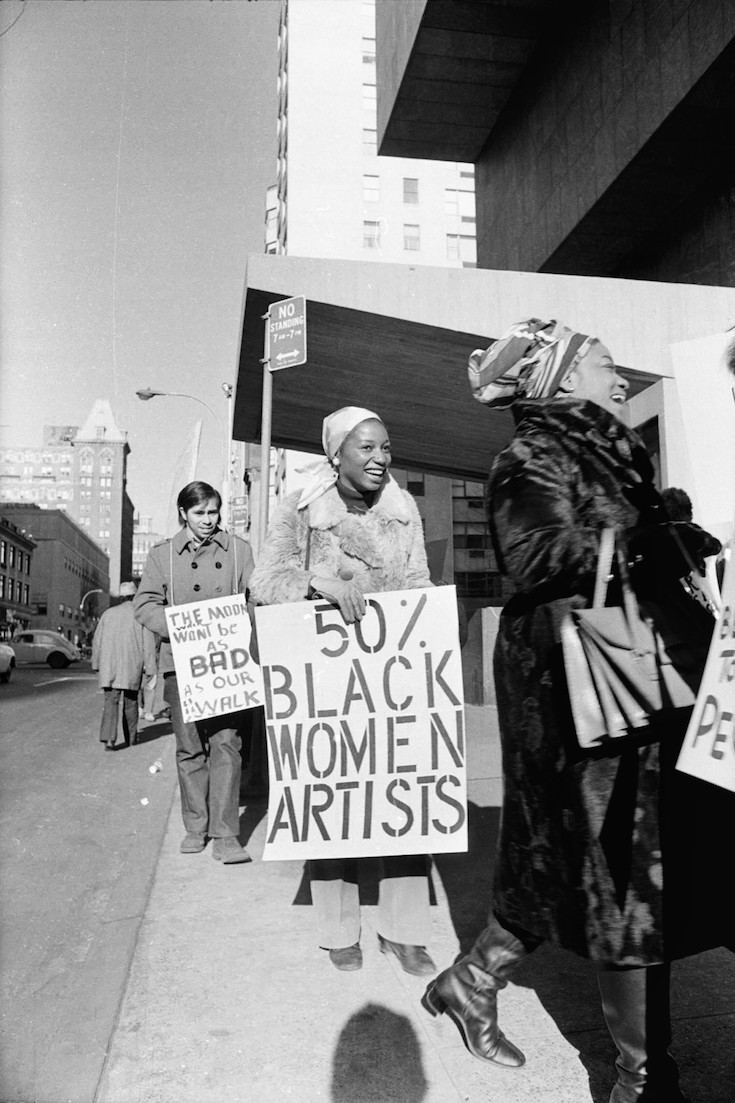[dropcap]In[/dropcap] scale, it is small — barely 18 inches tall — but its message couldn’t have been more explosive when Los Angeles artist Betye Saar turned a vintage California wine jug, with a label featuring a handkerchief-bedecked mammy, into a sculpture of a Molotov cocktail. Imprinted on the bottle is a black power fist. It’s degrading kitsch remade into fiery cultural armament.
The 1973 sculpture, part of “We Wanted a Revolution: Black Radical Women, 1965-85,” which opened at the Brooklyn Museum in April and is now at L.A.’s California African American Museum, had not been on public view since Saar made it 44 years ago. [mc4wp_form id=”6042″]
“Liberation of Aunt Jemima: Cocktail,” as the piece is titled, was one of a series of works in which Saar weaponizes — figuratively, at least — racially charged black collectibles, often smiling mammy figures who brandish pistols or grenades. In the case of “Liberation of Aunt Jemima: Cocktail,” the entire vessel takes on the guise of a weapon.
“I wanted to empower her,” Saar said of Aunt Jemima in 2015, referring to another of her pieces. “I wanted to make her a warrior.”
 Sarah DeSantis / Brooklyn Museum | Photo Credit
Sarah DeSantis / Brooklyn Museum | Photo Credit
 Lorraine O’Grady / Alexander Gray Assoc. / Artists Rights Society | Photo Credit
Lorraine O’Grady / Alexander Gray Assoc. / Artists Rights Society | Photo Credit
 Sarah DeSantis / Brooklyn Museum | Photo Credit
Sarah DeSantis / Brooklyn Museum | Photo Credit
NATIONAL MUSEUM OF AFRICAN AMERICAN HISTORY & CULTURE | WASHINGTON, DC
The National Museum of African American History and Culture is the only national museum devoted exclusively to the documentation of African American life, history, and culture. It was established by Act of Congress in 2003, following decades of efforts to promote and highlight the contributions of African Americans. To date, the Museum has collected more than 36,000 artifacts and nearly 100,000 individuals have become charter members. The Museum opened to the public on September 24, 2016, as the 19th and newest museum of the Smithsonian Institution. (Website).



You must be logged in to post a comment.